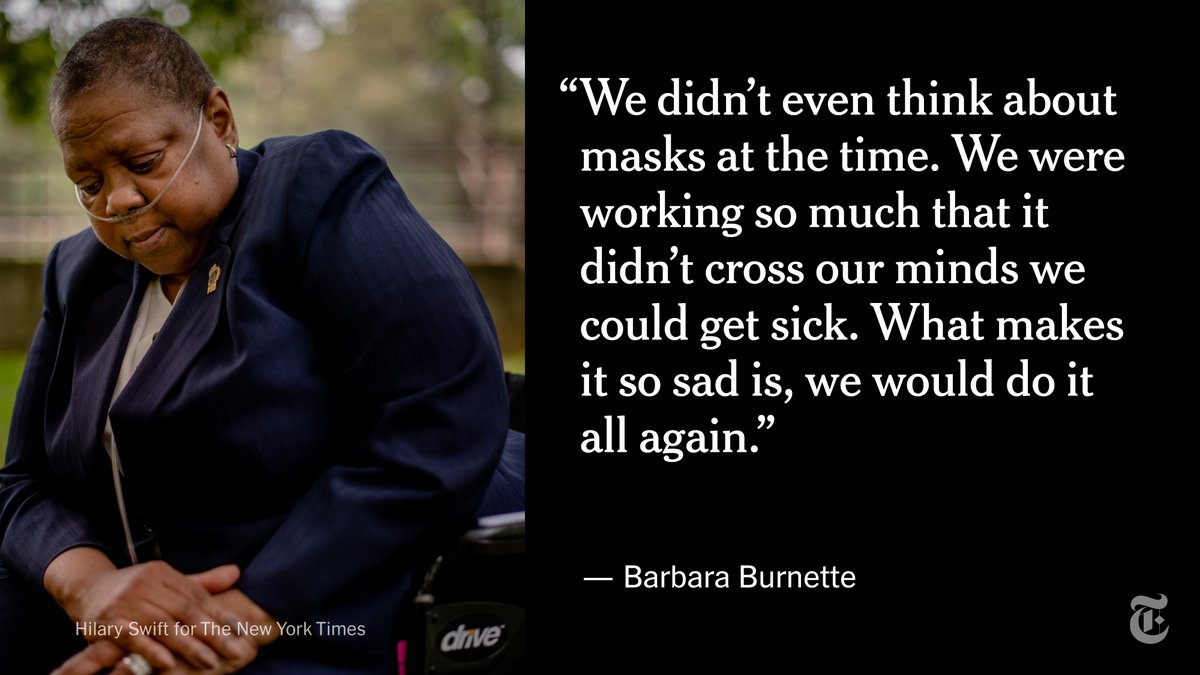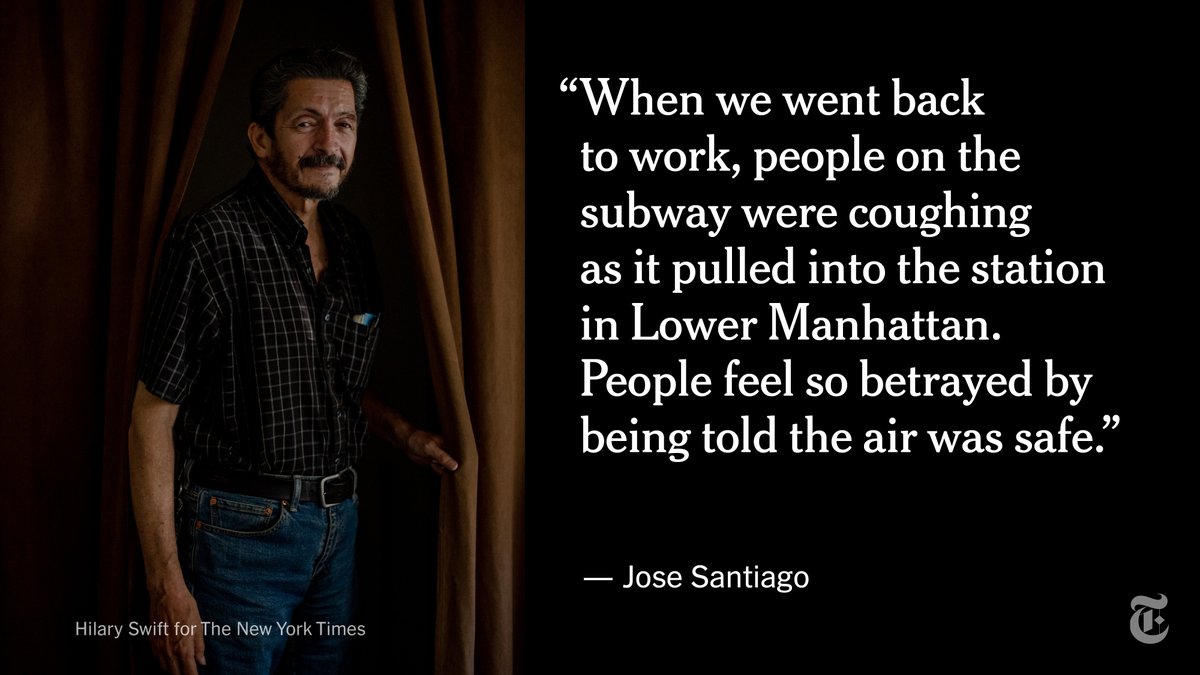
2,753 lives were lost the day of the Sept. 11 terror attack on the World Trade Center. That toll has likely been eclipsed by deaths from exposure to toxic pollutants in the air in the weeks and months after the collapse — and that number keeps growing. nyti.ms/3tIYZjz
John Mormando, 54, was working as a commodities broker a few blocks from ground zero in 2001. He later underwent a double mastectomy after being diagnosed with breast cancer, an ailment suffered by a cluster of men who spent time near ground zero. nyti.ms/3tIYZjz 

Carrie Benedict Foley’s firefighter husband, Daniel, died at age 46 from pancreatic cancer believed to be linked to his exposure to airborne debris. Daniel knew his death would devastate their five children, but he did not regret working at ground zero. nyti.ms/3tIYZjz 

Barbara Burnette, 58, was a police detective who helped with recovery efforts at ground zero. She was diagnosed with a lung disease in 2004. Then came lung cancer in 2017. She now uses a wheelchair and oxygen. nyti.ms/3tIYZjz 

Michael O’Connell, 45, searched for survivors after the terror attacks and in 2007 developed sarcoidosis, an autoimmune disease. He retired from the New York City Fire Department in 2009 because of lung problems. nyti.ms/3tIYZjz 

Val Velazquez-Stetz, 53, was a police officer recovering remains at ground zero. The air was so laden with dust that it felt like a snowstorm, yet she wore no mask. Within months, she had sinus and lung problems. Then came skin cancer and severe reflux. nyti.ms/3tIYZjz 

Yvonne Phang, 69, was teaching at a college several blocks from ground zero, where classes resumed weeks after the attacks. She had a double mastectomy for breast cancer. Dozens of her colleagues have been diagnosed with 9/11-related illnesses, she said. nyti.ms/3tIYZjz 

Liz Wilson, 62, was assigned to ground zero as a social worker for emergency medical workers and family members of victims. A nonsmoker, she has since experienced lung and breathing problems, including asthma, and growths in her lungs, breast and nose. nyti.ms/3tIYZjz 

Jose Santiago, 72, got doused with dust while reporting from ground zero for the radio station WBAI. Within months, he began to develop a chronic cough and would later develop chronic pulmonary disorders, skin cancer and other ailments. nyti.ms/3tIYZjz 

Most responders have registered for federal medical coverage and settlements. But only a small fraction of civilians affected by toxins have done so. Many are unaware that they are able to, or even that the illnesses they are suffering are 9/11-related. nyti.ms/3tIYZjz
• • •
Missing some Tweet in this thread? You can try to
force a refresh








